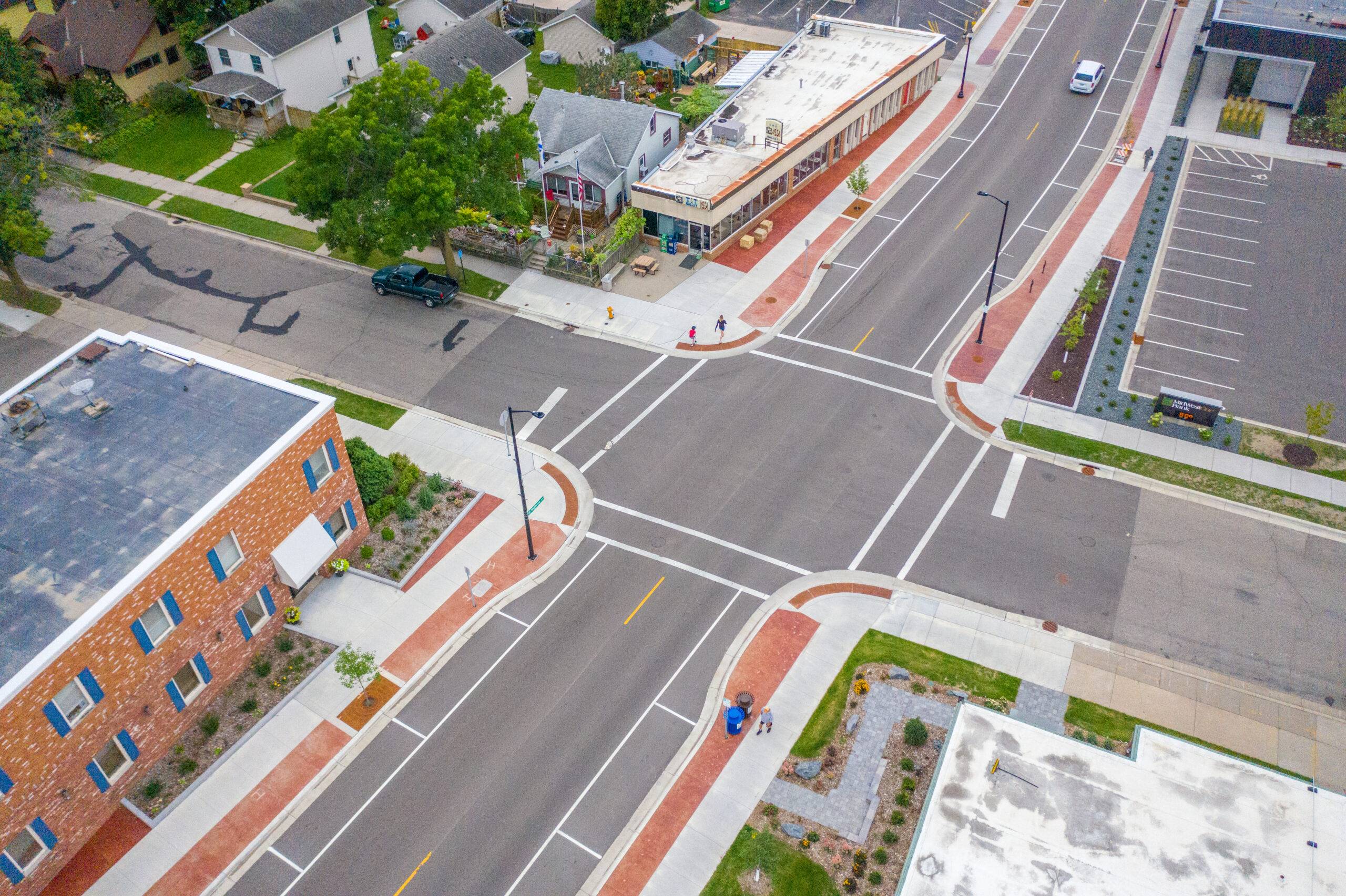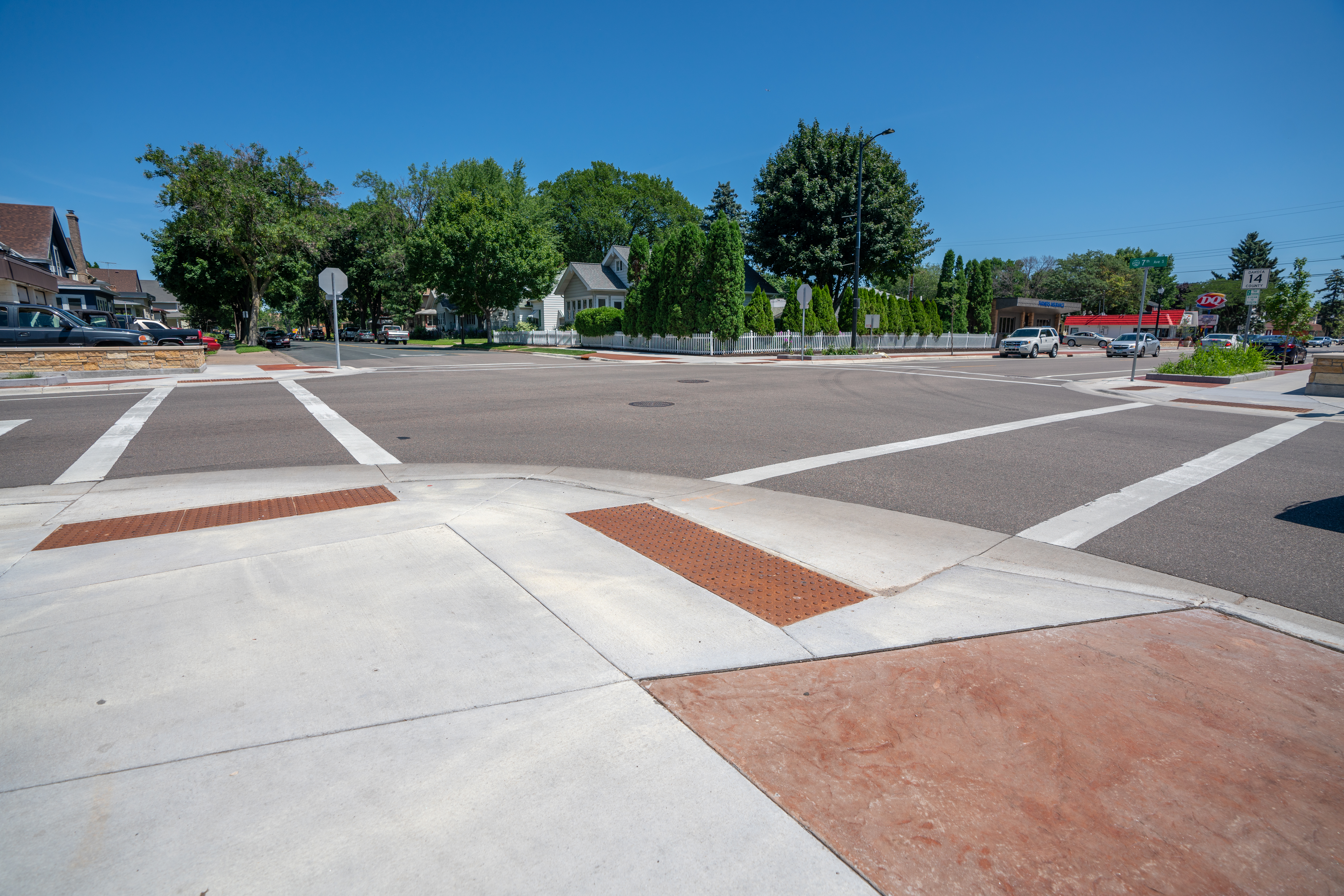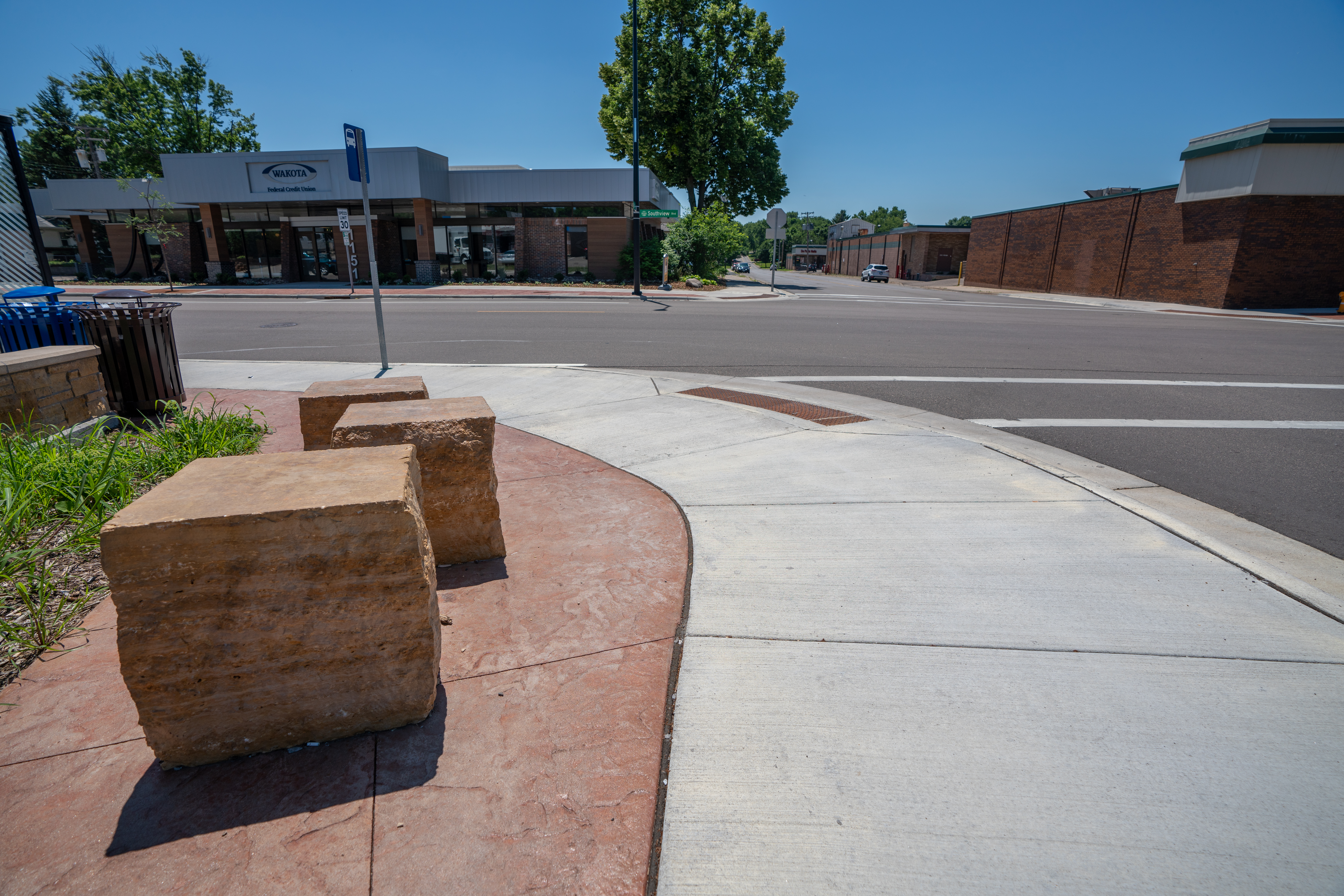
Safety First – Transportation Design for All Users
Many factors go into creating a safe community. The infrastructure of our streets, sidewalks, and other transportation modes is key in making sure all people feel safe going from place to place. Transportation experts have an opportunity to take simple aging infrastructure updates and build them into attractive and safe spaces that improve the livability of all users—no matter the age, ability, or destination.
Not everyone is able to drive a vehicle to get where they need to go. Many people rely on pedestrian access routes to reach their destination. Because of this, street crossings and sidewalks need to be designed with all users in mind while keeping universal accessibility at the forefront. This can be achieved through implementing various public rights-of-way accessibility guidelines (PROWAG) and Americans with Disabilities Act (ADA) standards, including
- Widened sidewalks
- Curb ramps and blended transitions
- Detectable warning surfaces
- Pedestrian signals
- Passenger loading zones
- Transit stops and shelters
- Street furniture
In the City of South St. Paul, Minnesota, Southview Boulevard was burdened with high crash rates, outdated and unnecessary traffic signals, uneven pavement surfaces, and deteriorating pedestrian facilities littered with obstacles like utility poles and planters. Many intersections along Southview Boulevard were not pedestrian friendly—parked cars blocking sight lines, cramped sidewalks, and poor lighting made it difficult to walking along and safely cross the roadways. These safety hazards led Dakota County and the City of South St. Paul to budget for an improvement project.
Bolton & Menk completed a comprehensive corridor analysis and preliminary corridor design to define amenities and the width of road and sidewalks. The design solution included removing two traffic signals, a narrowed street section with 11-foot travel lanes, eliminating some on-street parking, and a streetscape with designated pedestrian access routes. These corridor enhancements drastically improved pedestrian accommodations, including wider sidewalks, ADA-compliant curb ramps, pedestrian-scale lighting, and bump outs at intersections to improve sight lines for pedestrians and provide a shorter and safer crossing distance.
“As transportation professionals, we can make a difference in the lives of others when we plan, design, and build facilities that benefit everyone in the community. As a technical problem solver and designer, I enjoy creating safe and usable pedestrian facilities within our systems.” said Dena King, a senior transportation project engineer at Bolton & Menk. King led the design team in implementing the various solutions for the Southview Boulevard improvement project. The award-winning project offers greater accessibility for all users, resulting in improved safety and livability within the community.
Communities may have old infrastructure or outdated streetscaping. It is important to embrace the opportunity to make transportation facilities fully accessible to all community members, creating a more enjoyable, livable space that is safe for everyone.



